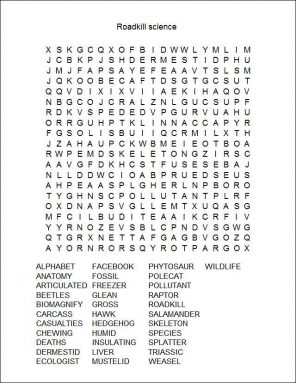Roadkill : Learning from the dead
Highway casualties can yield important scientific data
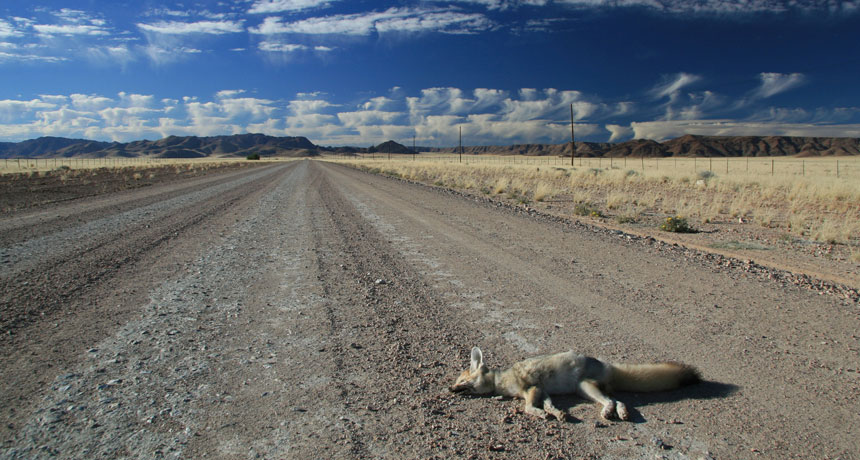
This bat-eared fox met its end on a lonely road when it was surprised by an oncoming vehicle. Some scientists are now turning to such casualties as a source of research data that may one day help those species.
JanRoode/ iStockphoto
The smell pouring out of the shoebox-sized container makes my body involuntarily jerk back with disgust. The odor is part dry, dusty cheese, part rotting meat. Its vileness is matched by what is is stuffed in the clear, plastic box. It’s a large salamander — or what’s left of one. In the nooks and crannies of its body and box, busy gray insects wriggle. These are the larvae of dermestid beetles. Slowly but incessantly, they are chewing away at the salamander. Eventually, all that munching will reduce the body to a dry, perfectly posed skeleton.
A few weeks earlier, this poor amphibian was roadkill — just another smooshed-up carcass by the side of the road. Michelle Stocker spotted it while cruising along slowly, searching for recent casualties. When she saw this animal, she stopped to scoop it up. Within hours, it would end up in a freezer back in her lab at Virginia Tech in Blacksburg.
As a paleontologist, Stocker normally studies the fossils of reptiles from the dinosaur era. Although not ancient, the dead salamander is still useful. Such roadkill, she’s found, helps students see how modern animals are put together. Clues from these newly dead also help scientists more easily identify fossils from the past.
Stocker is not the only scientist using roadkill in teaching and research. Highway casualties can provide clues to where species are and where they were going. And analyses of their tissues can point to where pollutants that humans release into the environment have been ending up.
Studying roadkill may seem gross. Still, it provides important data. And while the deaths may be tragic, what scientists glean from them may one day help better protect or understand wildlife species.
Squished school specimens
Paleontologists don’t usually encounter freshly killed frogs in their line of work. Many study fossils — the preserved remains of ancient life. Often these started out as bone. But sometimes they may be imprints of flesh or skin. Made of rock, these remains are now anything but squishy.
When paleontologists dig up a fossil, they need to identify it. “You don’t necessarily get the whole skeleton when you find the fossil,” Stocker explains. “A lot of stuff we are looking for is broken or fragmentary.” Often, there may be only a single tiny piece to work from. Scientists need to be able to look at any bone they find and figure out what type of animal left it — such as a lizard, frog or mammal. They also need to be able to say what part of the ancient animal that fragment represents. Perhaps it was a leg bone or a tooth.
To do this, Stocker says it helps to know what the modern equivalent of that extinct animal looks like. So she and other paleontologists sometimes use modern carcasses to teach their students anatomy. In these classes, students learn to recognize parts of the body based on their structure.
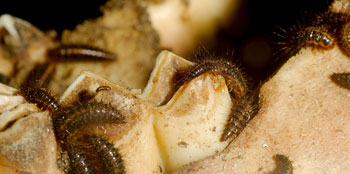
So on humid spring nights, right after rainstorms, she often can be found cruising slowly down country lanes in Virginia. Warm, moist weather attracts the frogs and salamanders she seeks. So she keeps an eye out for them and reptiles, such as lizards. These animals are closest to the phytosaurs (FY-toh-sorz) that she hunts in the field. Those now-extinct reptiles roamed the late Triassic period, between 200 million and 250 million years ago.
When students arrive in Stocker’s lab, they will dissect a roadkill carcass to learn the placement of its muscles and other organs. Then the body will be fed to dermestid beetles. Their careful chewing will leave behind a skeleton that is fully articulated — having all its bones still connected to each other, exactly as they would be in life.Stocker’s students also might put some of the bodies in water and let their soft tissues rot away. This can produce a disarticulated skeleton, where bones are jumbled about. Such mixed up parts are what scientists are likely to find when they hunt for fossils. For students, Stocker says, “Watching modern things come apart helps them recognize how extinct things [came] apart.”
Using the dead as a census of the living
For some scientists, studying roadkill is all about location. Clément Calenge works at the National Office of Hunting and Wildlife in Saint Benoist, France. He may never have picked up a dead frog from the road. Still, his research uses plenty of roadkill. Calenge is a biostatistician. That’s someone who collects and interprets large sets of biological data to interpret what they mean.
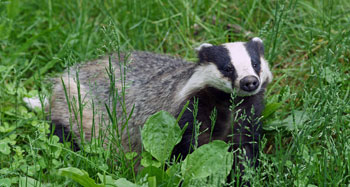
To know if there are too many mustelids, Calenge explains, you have to know how many there are. But these animals are very shy. Spotting and tracking them can be difficult and expensive.
So his team scouts for dead weasels. To do this, Calenge and his colleagues recruited 1,500 wildlife protection officers. These officers cruise roads near wild areas, protecting animals from illegal activities. They frequently see carcasses. All Calenge and his fellow researchers had to do was install log books in the officers’ cars and ask their volunteers to record every critter they saw, alive or dead.
Over three years, the officers logged more than 30,000 sightings. Calenge used these data to make a mustelid map of France. He and his colleagues published it on March 25, 2015 in PLOS ONE. While weasels are most common in the northwest of France, badgers roam throughout the country, they found. Polecats, another mustelid, were rare in the French Alps — in the far southwest of the country — but common in wetter areas such as Brittany (the nation’s northwest corner).
Learning from Project Splatter
Sarah Perkins also tracks animals based on roadkill. At Cardiff University in Wales, she studies ecology, or how organisms affect each other and their environment. She and her students started Project Splatter. It’s a website that uses roadkill to map animals all over the United Kingdom.
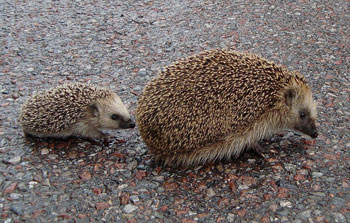
The project uses members of the public to serve as citizen scientists. When someone spots a dead animal on the road, they go to the project’s website and log the date and location. A handy map on the site helps these splatter spotters log locations precisely. But descriptions such as “hedgehog seen three miles past the ‘Three Horses Pub’” will also work. People can even use Twitter, Facebook, a smartphone app or email to report their sightings.
Perkins’ team hopes to use the data to protect local animals. Take those hedgehogs. Gardeners appreciate these animals, which dine on slugs, snails and other pests. But when the relatively slow creatures try to cross roads, they often get hit. “We’ve come up with an estimate of 50,000 hedgehogs killed per year on our roads,” she now reports.
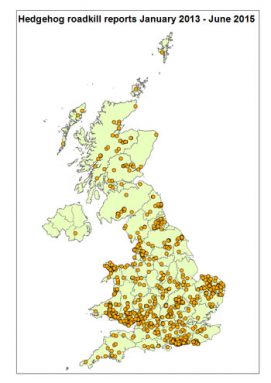
Raptor roadkill
Roadside carcasses also can give scientists information about the environment, such as how polluted it is.
Kyle Elliott gathers environmental data from birds called raptors. Also known as birds of prey, raptors eat small animals, everything from insects to other birds. Sentinel species warn of threats to their ecosystem. And “birds of prey are useful sentinels for what’s going on in the environment,” explains this ecologist at McGill University in Montreal, Canada.
As raptors dine on small creatures, they consume whatever pollutants tainted their prey. Some of those chemicals can now build up in the predator through a process known as biomagnification. So studying dead birds of prey can tell scientists a lot about what chemicals pollute their environment.
Many pollutants build up in an animal’s liver. This organ helps break down harmful substances (to be excreted in urine). But to get a liver, Elliott explains, you need a bird that isn’t going to miss it. And the only bird that won’t is a dead one.
So scientists often turn to roadkill.
Indeed, “One of the most common causes of death [in birds of prey] is being hit by a car,” Elliott says. Why? When chasing prey, a raptor thinks of little other than that potential meal. It’s not worrying about some oncoming car. And some raptors won’t turn their beaks up at the flesh of already dead animals. If that meal is roadkill, then swooping down to sample it could put the bird in the path of an oncoming vehicle.
Between 1999 and 2009, Elliott and his team collected 27 dead hawks and falcons from around Vancouver, Canada. Some had been electrocuted on power lines. Others were roadkill. The researchers analyzed each bird’s liver for 67 different pollutants.
Three classes of chemicals were of particular interest. Their names look like an alphabet soup. Among them are the insect-killer DDT, as well as PCBs (oily electrical insulating liquids) and PBDEs (chemicals that were used as flame-retardants in furniture and other products). Many of these chemicals are toxic to animals and people. The United States and Canada banned DDT in 1972. Similarly, a U.S. ban outlawed production of PCBs, short for polychlorinated biphenyls, in 1976. And in the face of a threatened ban on the PBDEs, manufacturers decided to stop making these chemicals. Still, tons of such toxic chemicals entered the environment before they were phased out. And even decades later, much of that pollution remains behind, Elliott says. The reason: These chemicals “take a long time to degrade.”
In the meantime, they can get into raptors.
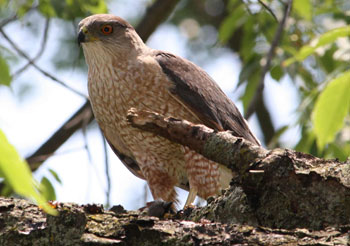
The pollutants likely tainted the flesh of the prey these birds had gulped down. The Cooper’s hawk that had very high levels of PBDE’s, for example, liked to eat out at a local landfill. It chowed down on sparrows and starlings that dined on the trash — cast-offs full of pollutants, Elliott explains.
Biologists hope that such toxic chemicals are on their slow way out of the environment — and birds. Through this work, says Elliott, “We hope to record the disappearance of [those pollutants] in the future.”
But as long as cars drive on roads and creatures live nearby, casualties will occur. By using roadkill, scientists hope to turn wildlife losses into research gains. “People want to turn something horrible into something good,” Perkins says. And by using data from some animal killed along a highway, she notes, its death may no longer have been a total waste.
Power Words
(for more about Power Words, click here)
amphibians A group of animals that includes frogs, salamanders and caecilians. Amphibians have backbones and can breathe through their skin. Unlike reptiles, birds and mammals, unborn or unhatched amphibians do not develop in a special protective sac called an amniotic sac.
anatomy (adj. anatomical) The study of the organs and tissues of animals. Or the characterization of the body or parts of the body on the basis of its structure and tissues. Scientists who work in this field are known as anatomists.
articulated A term for parts of some object that are connected by joints. Those joints allow movement. The fingers of a human hand are articulated with joints that allow each digit to bend a little or a lot. This allows the hand to grasp or flick or punch at something.
biomagnification The process by which the concentration of a chemical increases as it moves up the food chain. Typically, this occurs when a predator species feeds upon prey contaminated with that chemical.
biostatistics Statistics applied to biology or medicine. When it’s used for neurology, it’s called neurostatistics.
carnivore An animal that either exclusively or primarily eats other animals.
chemical A substance formed from two or more atoms that unite (become bonded together) in a fixed proportion and structure. For example, water is a chemical made of two hydrogen atoms bonded to one oxygen atom. Its chemical symbol is H2O.
chlorine A chemical element with the scientific symbol Cl. It is sometimes used to clean water. Compounds that contain chlorine are called chlorides.
citizen science Scientific research in which the public — people of all ages and abilities — participate. The data that these citizen “scientists” collect helps to advance research. Letting the public participate means that scientists can get data from many more people and places than would be available if they were working alone.
conservation The act of preserving or protecting something. The focus of this work can range from art objects to endangered species and other aspects of the natural environment.
DDT (short for dichlorodiphenyltrichloroethane) This toxic chemical was for a time widely used as an insect-killing agent. It proved so effective that Swiss chemist Paul Müller received the 1948 Nobel Prize (for physiology or medicine) just eight years after establishing the chemical’s incredible effectiveness in killing bugs. But many developed countries, including the United States, eventually banned its use for its poisoning of non-targeted wildlife, such as birds.
degrade (in chemistry) To break down a compound into smaller components.
dermestid beetles Beetles of the genus Dermestes. These insects feed on dead animals and plants. Scientists use these beetles to clean skeletons for display and study.
disarticulated A term for parts that belong to the same object and are normally connected by joints, but which now are disconnected. The order of the bones making up the limb of a living dinosaur may spread and come apart — become disarticulated — by the time it turns into a fossil.
ecology A branch of biology that deals with the relations of organisms to one another and to their physical surroundings. A scientist who works in this field is called an ecologist.
environment The sum of all of the things that exist around some organism or the process and the condition those things create for that organism or process. Environment may refer to the weather and ecosystem in which some animal lives, or, perhaps, the temperature, humidity and placement of components in some electronics system or product.
flame retardants Chemical coatings added to products, such as pyjamas, plastics, foam and furniture, to suppress or delay how fast they might burn in a fire.
fossil Any preserved remains or traces of ancient life. There are many different types of fossils: The bones and other body parts of dinosaurs are called “body fossils.” Things like footprints are called “trace fossils.” Even specimens of dinosaur poop are fossils. The process of forming fossils is called fossilization.
liver An organ of the body of animals with backbones that performs a number of important functions. It can store fat and sugar as energy, breakdown harmful substances for excretion by the body, and secrete bile, a greenish fluid released into the gut, where it helps digest fats and neutralize acids.
mammal A warm-blooded animal distinguished by the possession of hair or fur, the secretion of milk by females for feeding the young, and (typically) the bearing of live young.
mustelid A family of meat-eating mammals including otters, weasels, ferrets, wolverines and badgers.
organ (in biology) Various parts of an organism that perform one or more particular functions. For instance, an ovary is an organ that makes eggs, the brain is an organ that interprets nerve signals and a plant’s roots are organs that take in nutrients and moisture.
paleontology The branch of science concerned with ancient, fossilized animals and plants. The scientists who study them are known as paleontologists.
phytosaur An extinct group of reptiles from the late Triassic period, between 200 to 250 million years ago. Members of these species were about the size of modern alligators and crocodiles, though they are not closely related to them. But they may have lived similar lives, lunging at prey from riverbeds.
PBDEs (short for polybrominated diphenyl ethers) These chemicals are used as flame retardants to prevent materials such as car seats, electronics or furniture from burning quickly in a fire.
pollutant A substance that taints something — such as the air, water, our bodies or products. Some pollutants are chemicals, such as pesticides. Others may be radiation, including excess heat or light. Even weeds and other invasive species can be considered a type of biological pollution.
polychlorinated biphenyls (or PCBs) A family of 209 chlorine-based compounds with a similar chemical structure. They were used for many decades as a nonflammable fluid for insulating electrical transforms. Some companies also used them in making certain hydraulic fluids, lubricants and inks. Their production has been banned in North America and many countries throughout the world since around 1980.
raptor A bird of prey.
sentinel A guard or something that watches over others, or that effectively offers some warning of a potential problem. (in ecology) Species that scientists monitor to get information about the environment in which those organisms live. These species might be more sensitive to some environmental hazards, and so can indicate to researchers when those hazards are reaching dangerous levels.
smartphone A cell (or mobile) phone that can perform a host of functions, including search for information on the Internet.
statistics The practice or science of collecting and analyzing numerical data in large quantities and interpreting their meaning. Much of this work involves reducing errors that might be attributable to random variation. A professional who works in this field is called a statistician.
Triassic Period A time in the distant geologic past, about 200 million to 250 million years ago. It’s best known as the period during which dinosaurs first emerged.
United Kingdom Often referred to as Britain, its roughly 60 million people live in the four “countries” of England, Scotland, Wales and Northern Ireland. More than 80 percent of the UK’s inhabitants live in England. Many people — including UK residents — argue whether the UK is a country or instead a confederation of four separate countries. The United Nations and most foreign governments treat the UK as a single nation.
Wales One of the three components of Great Britain (the other two being England and Scotland. It’s also part of the United Kingdom (whose other members include England, Scotland and Northern Ireland).
Word Find (click here to enlarge for printing)
